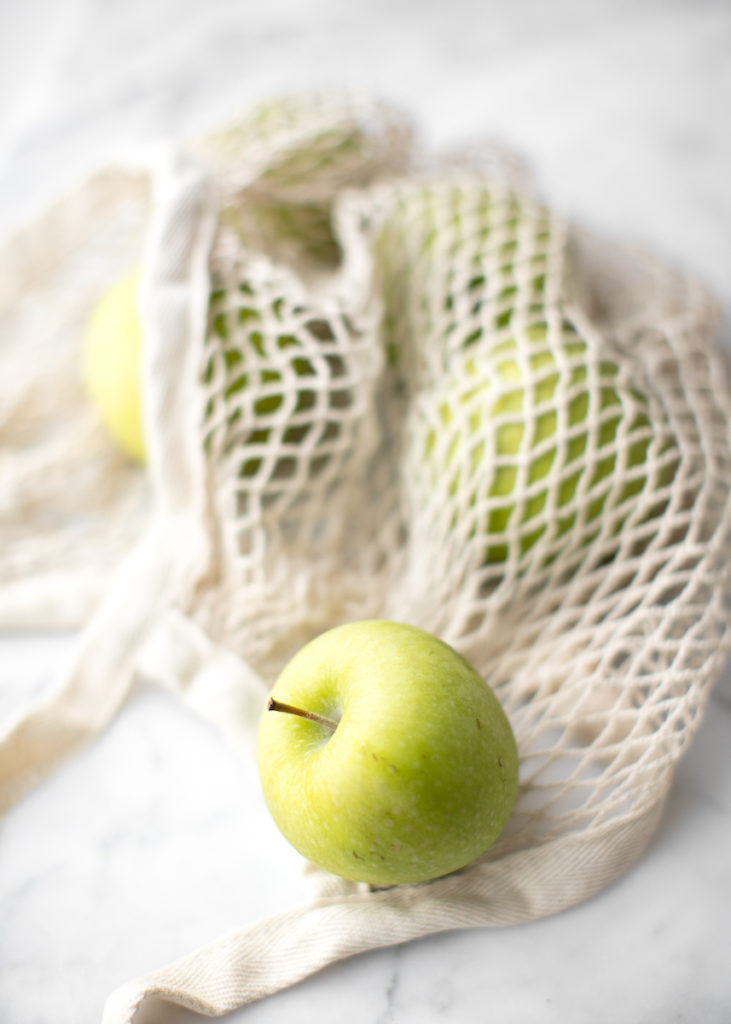But Kate, you told me that there is no “one right way” to be healthy?! Yes, my friend, you’re right. There are so many healthy foods to eat that it can be overwhelming to know where to start. (If this is you, be sure to grab my free guide “Clean Eating Made Easy” here.) But it’s not just deciding which healthy foods to eat, but also sticking to your grocery budget and not buying ALL. THE. THINGS.

What are these Healthy Foods to Eat?
First, let’s stick to the basics. No matter what “healthy” means to you, there are some foods that most people would consider good for you.
- Eat more plants
- Choose whole kernel grains
- Buy local and organic when possible
And how do I do this on a budget?

Produce
- Eat seasonally. Produce bought out-of-season is considerably more expensive. Stick to the fruits and veggies that are in season, and not only will you save some money, but you’ll also be getting more nutrient-dense food.
- Consider the frozen food aisle. In this grocery store section, the fruits and vegetables are flash-frozen, trapping in the nutrients before they’re lost. This makes frozen produce an excellent choice for many meals. And they’re much less expensive.
- Don’t throw out rotting fruit and veggies! If you don’t get a chance to eat your produce before it starts to spoil, freeze it! Frozen fruit (and veggies) work well in smoothies and baked goods, veggies are great to use in soups, quiches, or rice bowls, and herbs can be frozen with olive oil in your ice cube trays for a quick and easy (and flavorful!) base to any sautee.
Replace or Reduce Animal Products with Plants
- Meat is expensive. (And if you think about it, it should be.) A great way to reduce your grocery bill is to replace meat and dairy consumption with beans and lentils. Start with swapping one to two meals a week with a meatless entree. Rice bowls made with tofu or beans, lentil stew, or chickpea tacos are all great options. More fiber and less expensive. Win-win!
- Besides making one or two meals a week meatless, try using less meat in each meal. Fill up three-quarters of your plate with fruits, vegetables, and whole-kernel grains, and you won’t even miss the larger portions of meat.
Shop the Bulk Bins
I love buying my grains, nuts, and seeds from the self-serve bins at the grocery store. These typically have a lower unit price, plus you decide how much you need. Nuts and seeds can go rancid if not eating quickly, so either buy small amounts in bulk or store them in the freezer (or both!).
Make Your Own Snacks
Cutting out processed foods (slowly, if you must) is one of the first steps to cleaning up your diet. So what are the healthy foods to eat when it comes to snacks? Some of my favorites:
- Air-popped popcorn
- Homemade hummus
- Apple or banana with natural peanut butter
- Homemade granola (find the recipe here)
Prepare a List (and stick to it!)

My lowest grocery bills are always when I’ve done my homework:
- I look at the week ahead and determine the meals I’ll prepare each day, based on my work schedule and other family activities.
- Next, cross-check which ingredients I already have on hand.
- Whatever is missing goes on the list.
- Consider all meals, snacks, and beverages.
- Do not stray from this list! If it’s not on the list, do not purchase it.
To summarize, finding healthy foods to eat can be easy and affordable. Try to purchase the ingredients you need to prepare your food instead of buying processed, prepared, or ready-to-eat foods. Not only does this save you money, but it’s also a much healthier way to eat!
If you need more ideas or are looking for easy food swaps, grab my free guide, “Clean Eating Made Easy,” here.
Great advice. I always keep a grocery list close by to add items as I “run out” of one of my staples…
I started keeping my list in the Notes section of my phone. Then I never leave my list at home, and it’s always close by when I discover we’re out of something.